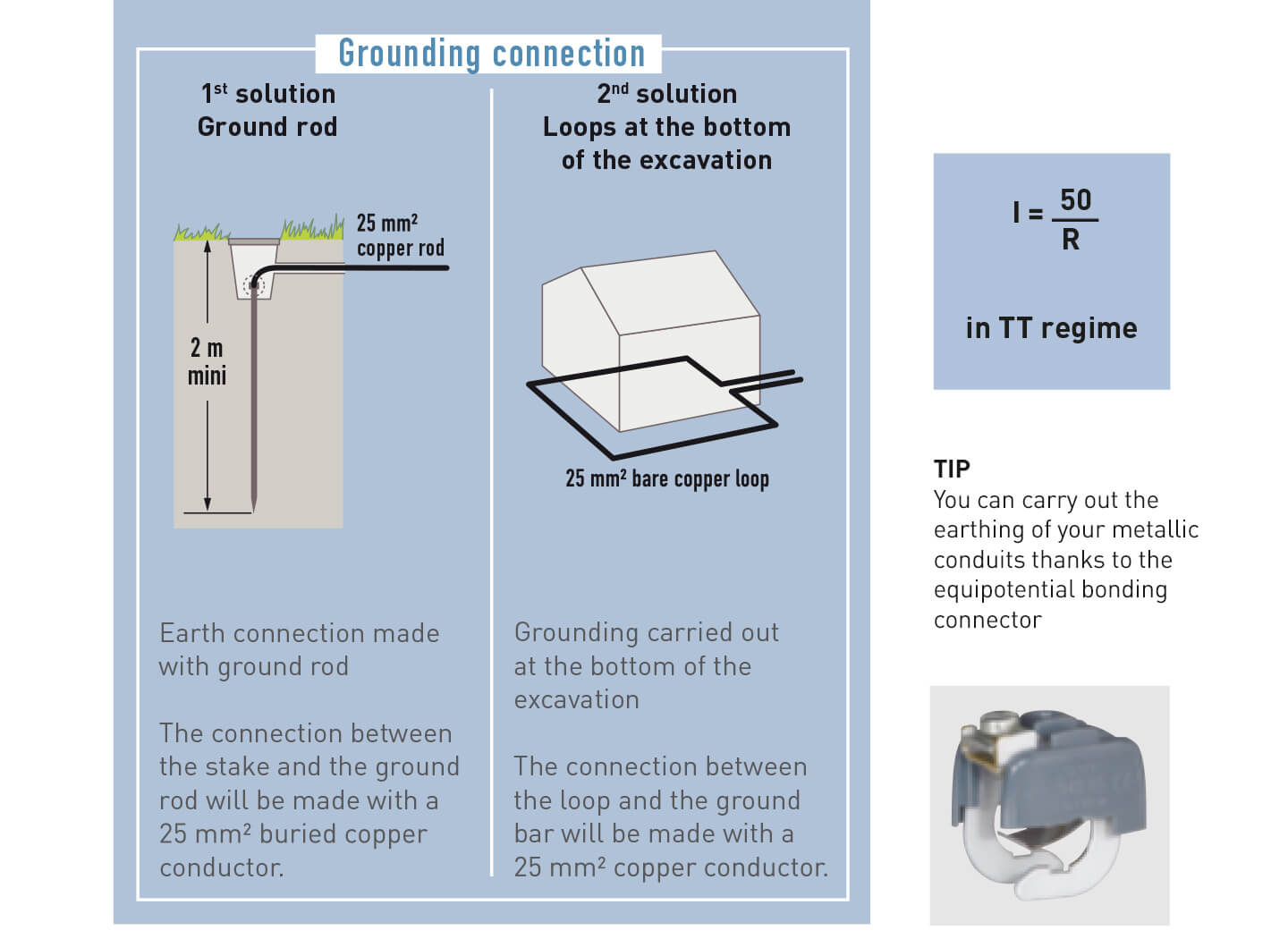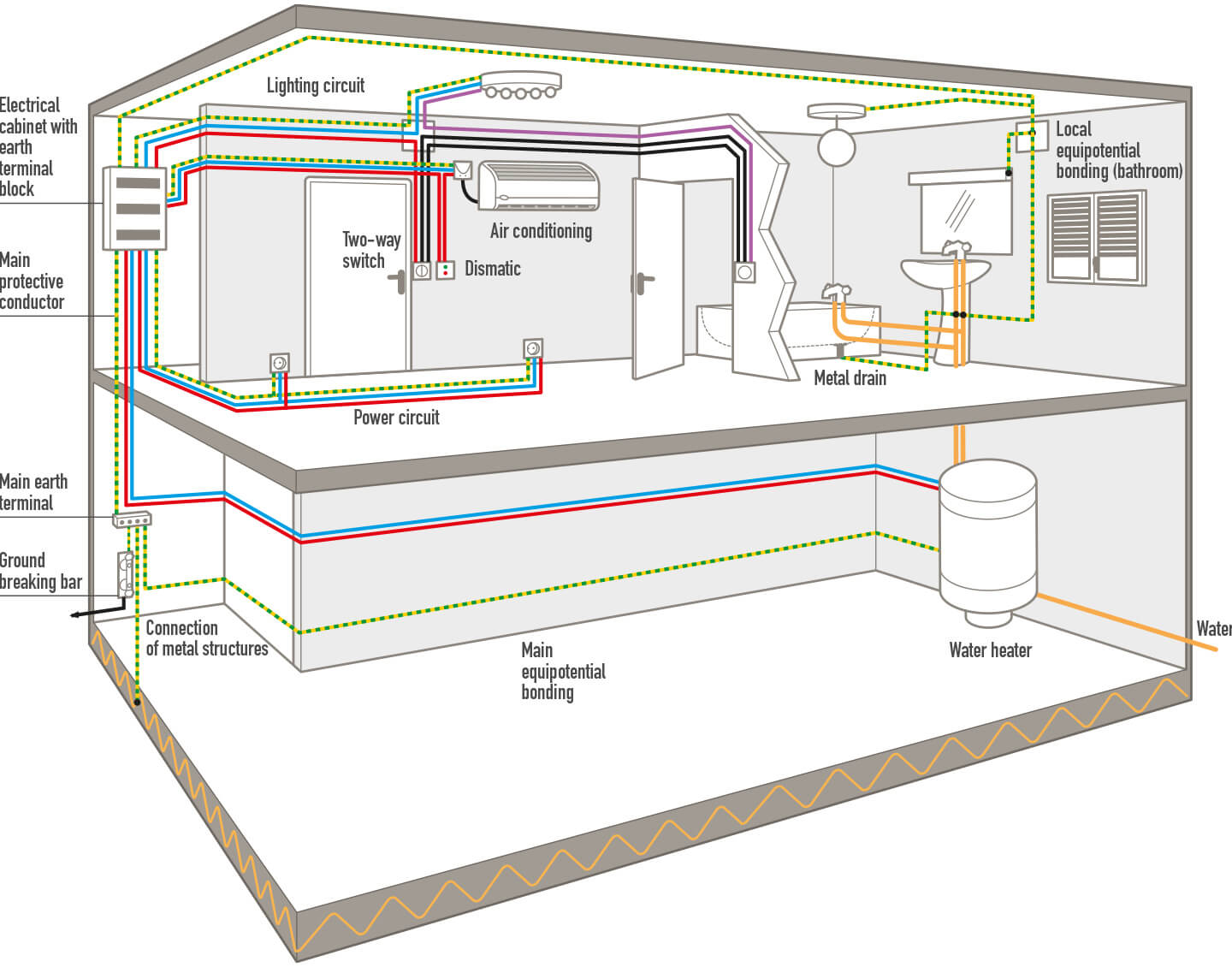How to ground electrical installations?
As a required step in any electrical installation, grounding goes along with the differential protection to ensure the safety of people by ensuring the flow of leakage or fault currents to the ground. We can show you how to do it!
What are the elements to be grounded?
Grounding: The must-have safety solution
Ground connection is the device that allows leakage or fault currents to flow to earth.
The quality of an earth connection depends on:
- the nature (more or less conductive) of the soil,
- the humidity level of the soil and the temperature,
- its size and shape.
How to make a ground connection?
There are two possible ways to make an earth connection: with an earth rod or in a loop at the bottom of the excavation.

Keep in mind!

Good to know
For guidance, here are the limit values of the differential device to be used according to the quality of the ground.
The higher the resistance of the earth, the higher the sensitivity of the differential device (10 mA: high sensitivity, 650 mA: low sensitivity). All Legrand differential devices have a sensitivity of 30 mA, which allows them to be efficient even for poor quality grounds.

Electrical installation grounding scheme
